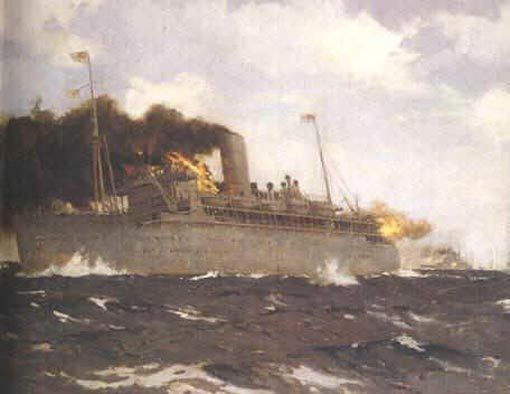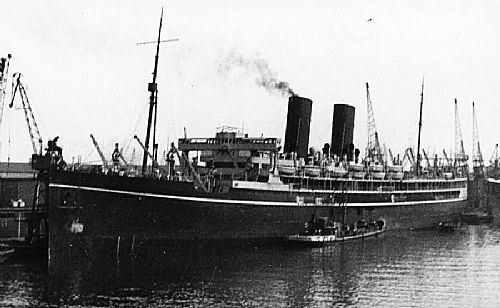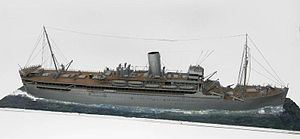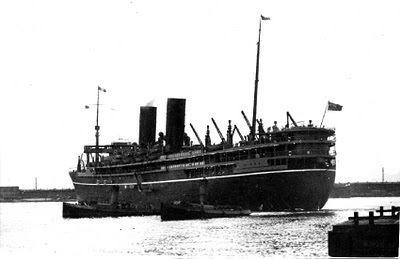Yard number 660 Launched 22 August 1925 Draft 8.99 m | Construction started 1923 Length 167 m Builder Harland and Wolff | |
 | ||
Owner Peninsular and Oriental Steam Navigation Company Route London-Bombay passenger and mail service | ||
HMS Rawalpindi was a British armed merchant cruiser (a converted passenger ship intended to raid and sink enemy merchant shipping) that was sunk in a surface action against the German battleships Scharnhorst and Gneisenau during the first months of the Second World War.
Contents

Merchant service

The ship started life as the 16,695 registered tons Peninsular and Oriental Steam Navigation Company (P&O) ocean liner SS Rawalpindi , built by Harland and Wolff. She was launched on 26 March 1925 by Lady Birkenhead, the wife of F. E. Smith, 1st Earl of Birkenhead, and joined the P&O fleet in September of the same year. She was named after the city of Rawalpindi, a British garrison town in what is now Pakistan. She could carry 307 First Class and 288 Second Class passengers, and was employed on the London to Bombay service.
Naval service

Rawalpindi was requisitioned by the Admiralty on 26 August 1939 and converted into an armed merchant cruiser by the addition of eight elderly 6 in (150 mm) guns and two 3 in (76 mm) guns. She was set to work from October 1939 in the Northern Patrol covering the area around Iceland. On 19 October in the Denmark Strait, Rawalpindi intercepted the German tanker Gonzenheim (4,574 grt), which had left Buenos Aires on 14 September. The tanker was scuttled by her crew before a boarding party could get on board.
Sinking

Whilst patrolling north of the Faroe Islands on 23 November 1939, she investigated a possible enemy sighting, only to find that she had encountered two of the most powerful German warships, the battle cruisers Scharnhorst and Gneisenau, which had been conducting a sweep between Iceland and the Faroes. Rawalpindi was able to signal the German ships' location back to base. Despite being hopelessly outgunned, 60-year-old Captain Edward Coverley Kennedy RN of Rawalpindi decided to fight, rather than surrender as demanded by the Germans. He was heard to say "We’ll fight them both, they’ll sink us, and that will be that. Good-bye".

The German warships sank Rawalpindi within 40 minutes. She managed to score one hit on Scharnhorst, which caused minor splinter damage. 238 men died on Rawalpindi, including Captain Kennedy. Thirty-seven men were rescued by the German ships, a further 11 were picked up by HMS Chitral (another converted passenger ship). Captain Kennedy — the father of naval officer, broadcaster and author Ludovic Kennedy — was posthumously Mentioned in Dispatches. Crew members on Scharnhorst and Gneisenau were eligible for the High Seas Fleet Badge for participating in the sinking of Rawalpindi.
Sister ships

Rawalpindi was one of the P&O 'R' class liners from 1925 that had had much of their interiors designed by Lord Inchcape's daughter Elsie Mackay. Her sister ships SS Ranchi, Ranpura and Rajputana were also converted into armed merchant cruisers. Rajputana was torpedoed by the German submarine U-108 in the Denmark Strait and sunk on 13 April 1941.
